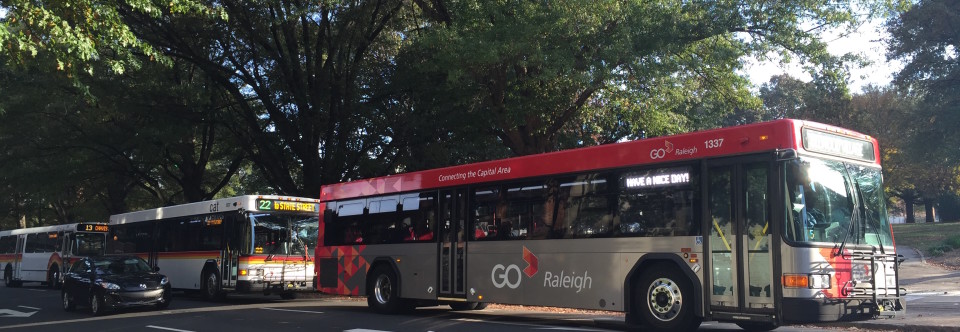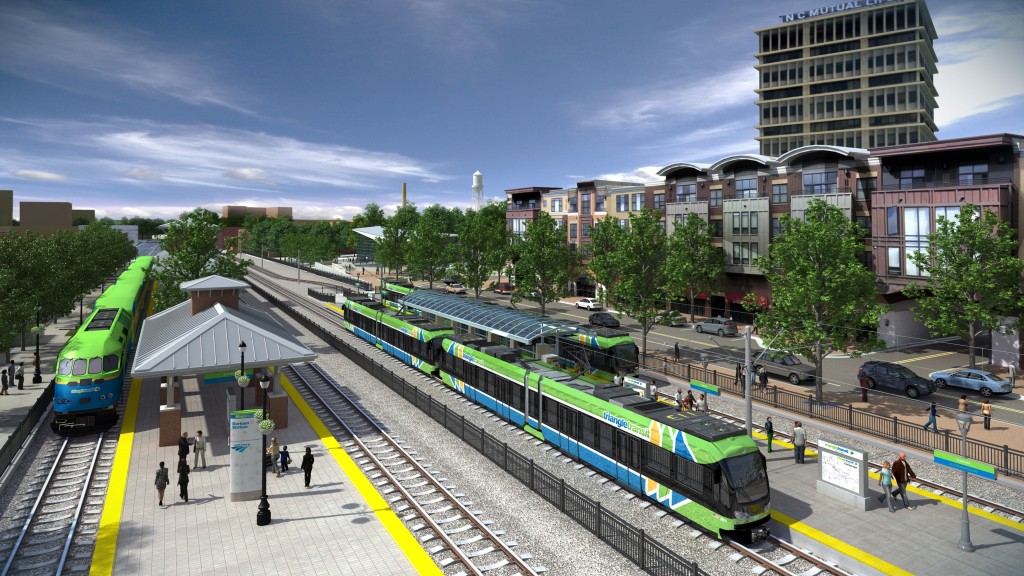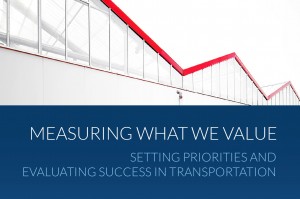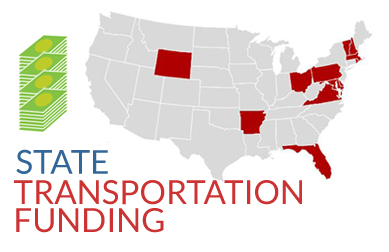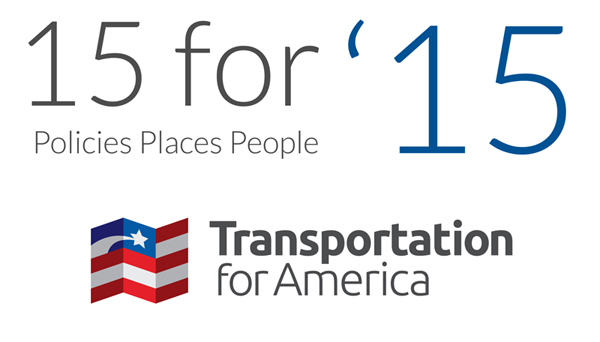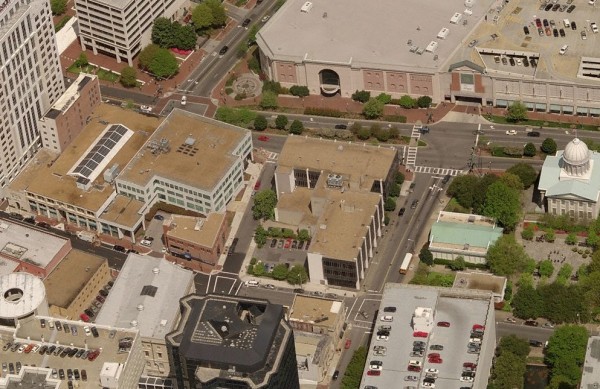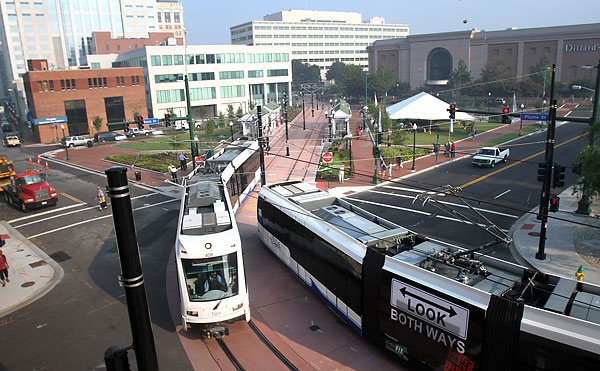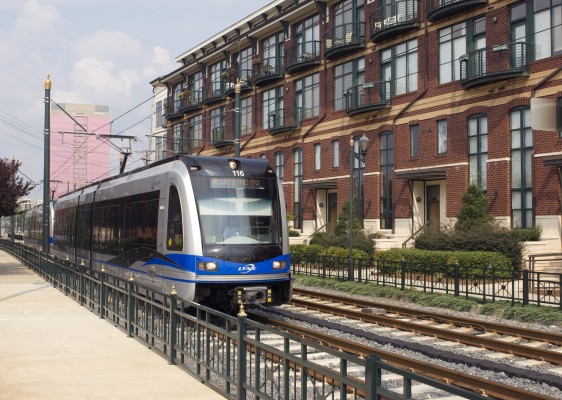It’s a challenge to craft a list of only five states, regions and cities that have important or notable things happening this year. Whether states attempting to raise transportation revenue this year, states changing key policies and continuing to innovate how they choose or build transportation projects, or local communities going to voters to raise money for new projects, there’s no shortage of places worth watching this year. Here are five that rose to the top, but tell us what you think we missed, in your area or elsewhere.
Ed: As the year began, we thought it would be fun to identify 15 people, places and trends worth keeping an eye on the next 12 months. We’re rolling out this list in three posts — read our first post on five policy issues worth watching on Capitol Hill in 2015.

Places
1. Minnesota
If we released a list this time last year, Minnesota might have appeared on that one as well. Though a broad coalition (Move MN) formed to rally support from the public and lawmakers for raising transportation revenues, the DFL majority in both chambers did not pass a transportation funding package in 2014. DFL Gov. Mark Dayton, running for reelection, seemed hesitant to support raising any taxes, though he routinely acknowledged that Minnesota needed to invest in their aging transportation network. Late in the election, he introduced his 2015 legislative plan to raise revenue: a new 6.5 percent wholesale tax on gasoline, in addition to a variety of other fee increases.
Gov. Dayton won re-election, but the Minnesota House flipped back to a GOP majority, providing a new challenge for his plan in the legislature. Though Move MN built an impressively broad coalition, they weren’t able to secure support from the statewide chamber and a few other key groups that represent Minnesota businesses. Gov. Dayton has already been lobbying those groups in 2015 to support his plan that would raise over $6 billion over the next decade.
Republicans in control of the House have issued their plan that would raise no new taxes but allocate $750 million over the next four years via various internal accounting maneuvers. (Great comparison of the two plans here.) With two legislative chambers split between the parties but a growing public call for something to be done to invest infrastructure, Minnesota will be a critical battleground to watch this year. If Congress fails to find a funding solution to keep the nation’s trust fund from going bankrupt this Spring, Minnesota — and states facing a shortfall — could be hit by a double whammy if they’re not prepared to act on their own.
2. Utah
While there had been some noise over the last year in Utah about the need to raise new transportation revenue, there was no concrete legislation introduced or seriously discussed in 2014. In late 2014, Governor Herbert suggested he was open to raising the gas tax in 2015, which was “a proposition [speaker-elect Greg] Hughes doesn’t see getting very far” in the upcoming legislative session, according to the Deseret News. At the time, Rep. Hughes did suggest that “House Republicans do want to look what he sees as an outdated formula for calculating the state’s 24.5-cent per gallon gas tax.” But just a few weeks ago, news broke that a deal could be closer than previously thought. An article in the Salt Lake Tribune last week broke the news that the state’s GOP caucus endorsed the idea of raising transportation taxes, but also overhauling the funding system — which could mean a revenue source that will rise with inflation.
“We have talked about concepts now for two years,” House Transportation Committee Chairman Johnny Anderson, R-Taylorsville, told a forum of the Utah Highway Users Association. “Know that the work is about to be done” to raise tax for transportation. …Anderson said the House GOP Caucus last month endorsed not only transportation-tax hikes, but also the idea to “dump our antiquated” tax system for one that automatically keeps up with inflation and makes those now escaping gas tax contribute.
The Utah legislature is somewhat unique — their trust of the Utah DOT runs so high that they often appropriate significant general funds to transportation projects. Utah could also prove to be a significant bellwether for other GOP-controlled state legislatures to follow. Utah’s session begins January 28, so we’ll soon find out if this proposition has legs.
3. Illinois
Incoming Illinois Republican Governor Bruce Rauner faces significant challenges, but some of his first moves have a lot of advocates hopeful about positive changes that could come in 2015. Just a few years removed from a governor going to jail and a patronage hiring scandal at state agencies, Illinois is also in one of the worst fiscal messes in the country, brought on by billions in unfunded pensions, decreased tax revenue, and repeated downgrades to the state’s credit rating.
As the Governor and the legislature collaborate on a budget and craft a new capital plan for infrastructure investment, the fiscal crisis facing the state provides an interesting opportunity for Gov. Rauner, who ran as a reformer and a prudent fiscal manager on his business bona fides. With the state billions in debt and confidence in IDOT incredibly low, overhauling the system and moving towards a new system for measuring the performance of the state’s transportation spending could be the only way to restore public trust — essential for raising any new money for transportation.
Possibly hinting at a move in this direction, Gov. Rauner appointed Randy Blankenhorn from the Chicago MPO (CMAP) to head the state DOT, an appointment which could help bring the issue of performance measures into the debate. “There’s always hyperbole and optimism when you have a changing of the guard. But I sincerely believe that we have a chance to right Illinois’ ship with Gov. Rauner and Randy Blankenhorn,” said Peter Skosey with the Metropolitan Planning Council (MPC) and the T4 Advisory Board. As part of his transition team on transportation, Gov. Rauner also brought in MarySue Barrett from MPC, one of the leading advocates in the entire state for a performance-based transportation system.
With these pieces in place, it’s possible that discussing a way to restore credibility and create a new transparent mechanism for distributing any new transportation funds could be central in the debate in Illinois in 2015, which makes this an important state to watch.
4. Indianapolis, Indiana
It was a huge victory when the Indiana legislature and Governor Pence approved a long-sought bill in March 2014 that finally gives metro Indianapolis counties the right to vote on funding a much-expanded public transportation network, with a major emphasis on bus rapid transit. Civic, elected and business leaders had been hard at work since 2009 producing an ambitious and inspiring IndyConnect plan, “the most comprehensive transportation plan — created with the most public input — our region has ever seen,” according to Mayor Greg Ballard in the foreword to our Innovative MPO report. Now the hard part comes as they build public and political will and decide what to include on a November 2016 ballot measure that would raise revenue from changes to local income taxes — a challenging revenue mechanism to say the least.
While transit expansion has more support in the region’s core, local leaders acknowledge they have an uphill battle in some suburban counties more skeptical of the merits of transit. Mayor Ballard and the diverse group of Indy businesses (including a booming healthcare industry) supporting IndyConnect understand how important this measure is for helping Indy be economically competitive in the future. Indy likely won’t be supplanting Chicago as the big city of choice in the Midwest, but there’s a desire among local leaders for Indy to be the city that can attract young families who think Chicago is too expensive; or luring recent college grads back home to Indy. And a strong regional public transit system is lies at the very core of their economic strategy.
Though Indianapolis counties won’t vote on the transportation plan until 2016, some of the most important work will be done in 2015 as they continue their model efforts to build consensus in urban and suburban areas alike on a plan to take to the ballot.
5. Raleigh, North Carolina
After watching the Triangle region’s two other counties approve ballot measure to raise funds for a regional transit system originally envisioned by all three counties, Raleigh could finally be joining the party due to a big shakeup in their county’s Board of Commissioners in 2014.
Durham and Orange counties approved half-cent sales taxes in 2011 and 2012 respectively to fund transit operations, improved bus service and a regional light rail line. Although it contains the biggest city in the region (Raleigh), the Wake County Commissioners hadn’t allowed a question to raise funds for a regional transit system to go to the ballot. In fact, a handful of commissioners actively prevented the issue going forward, often stifling debate at times.
That could all change in 2015, as more than half of the county board was replaced last November. Four new supportive members were elected to the county board, replacing four who had consistently been on the other side of the issue, clearing the way for a potential ballot measure in Wake County. It’s worth noting that the mayor of Raleigh, Nancy McFarlane, has long been a supporter of a regional plan for transit, and she joined with other mayors and T4America a year ago to meet with USDOT Sec. Foxx on the importance of passenger rail.
Wake County is one of the fastest growing counties in the U.S. and the county’s population is due to double by 2035. Yet this rapidly growing community with a notable high-tech, research, government and major university employment base is one of the few major metro regions that lacks a significant transit system. Just like Indianapolis, they will be crafting their plan and building consensus in 2015 as they shoot for a vote in 2016. Though the issue has support on the county board now, there will be a public debate and votes worth watching in 2015.
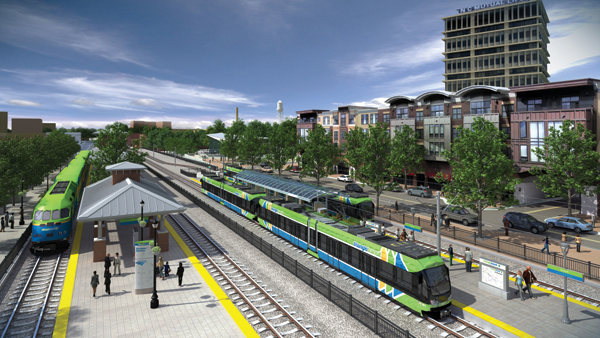
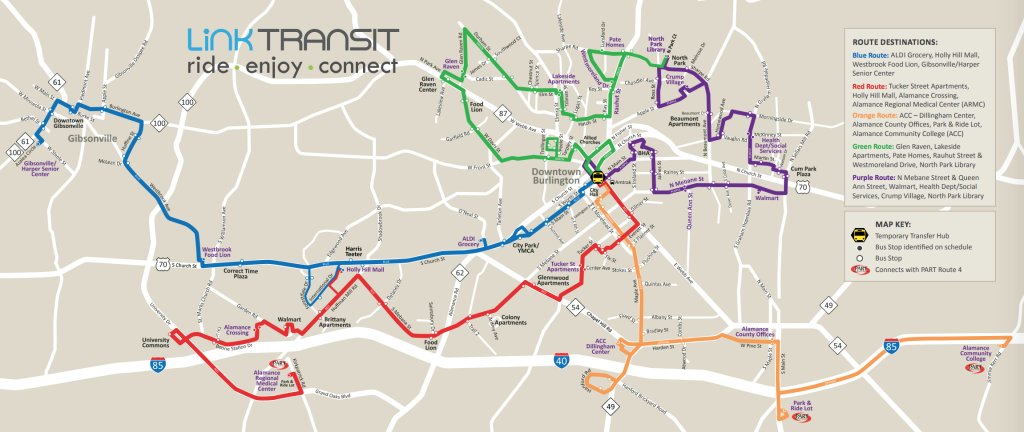
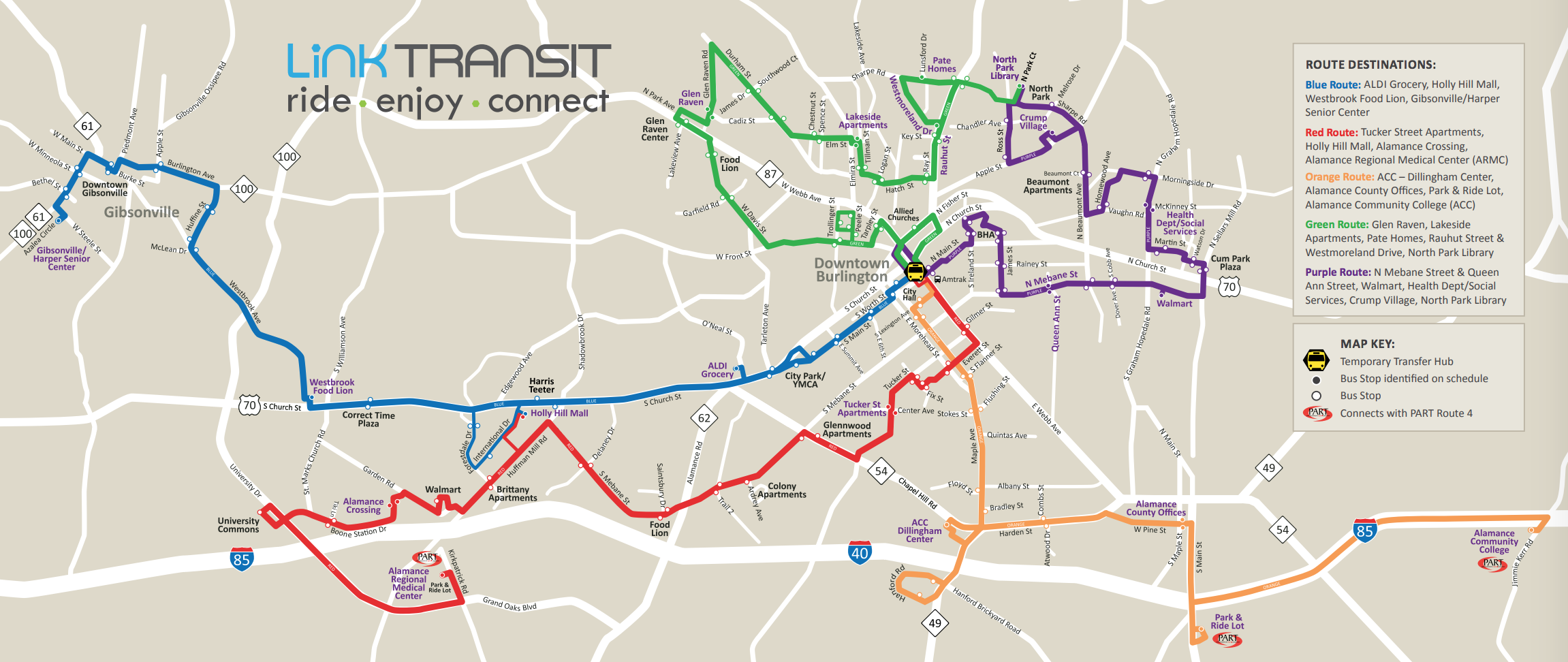 Link Transit’s current route map. (Image: Link Transit)
Link Transit’s current route map. (Image: Link Transit)
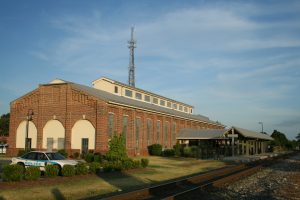
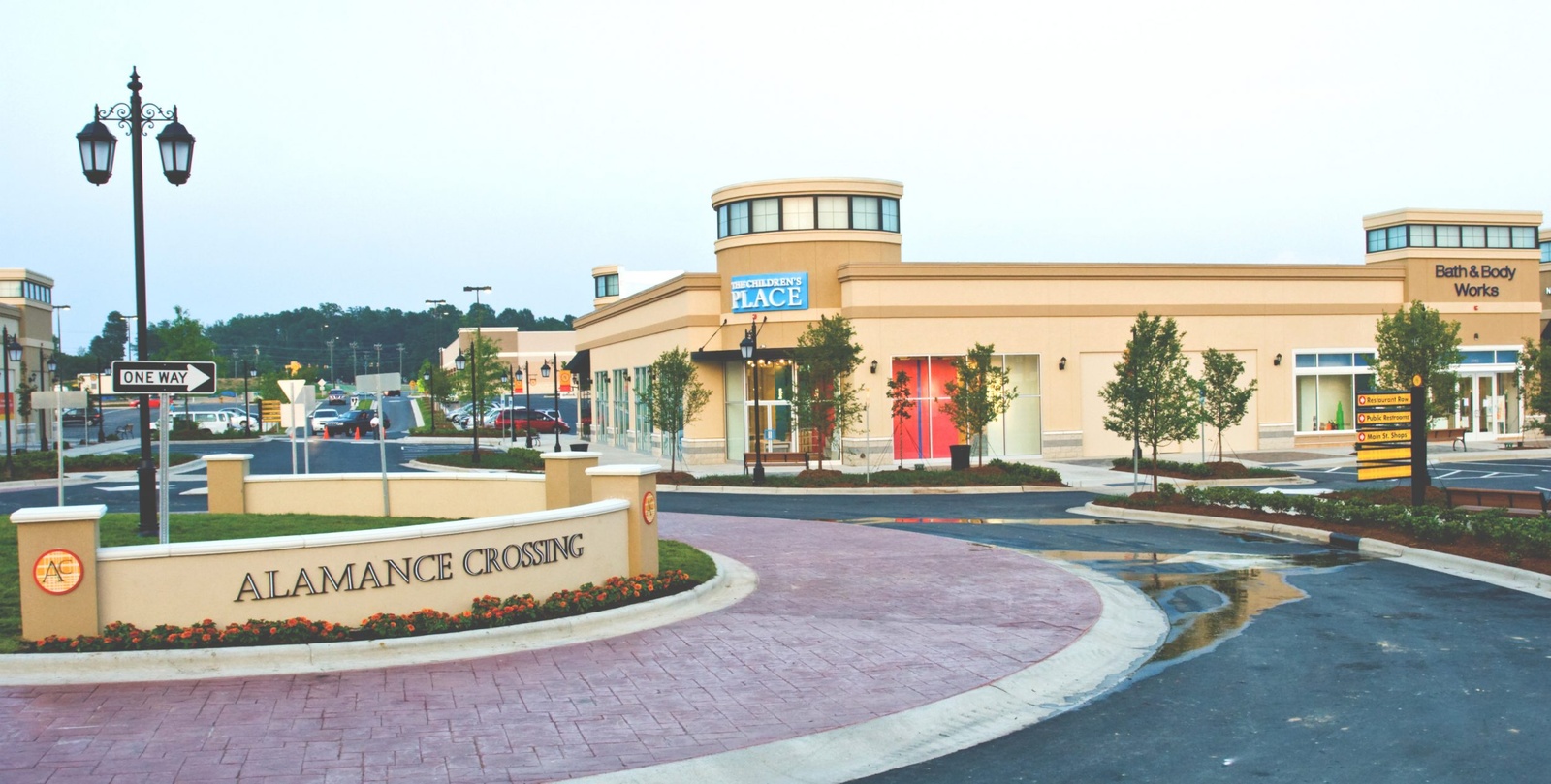 Alamance Crossing, Burlington’s second and newest (outdoor) shopping mall, is served by the red route. The Holly Hill Mall is served by the red and blue routes. (Image: A_Moffa, LocalWiki)
Alamance Crossing, Burlington’s second and newest (outdoor) shopping mall, is served by the red route. The Holly Hill Mall is served by the red and blue routes. (Image: A_Moffa, LocalWiki)



